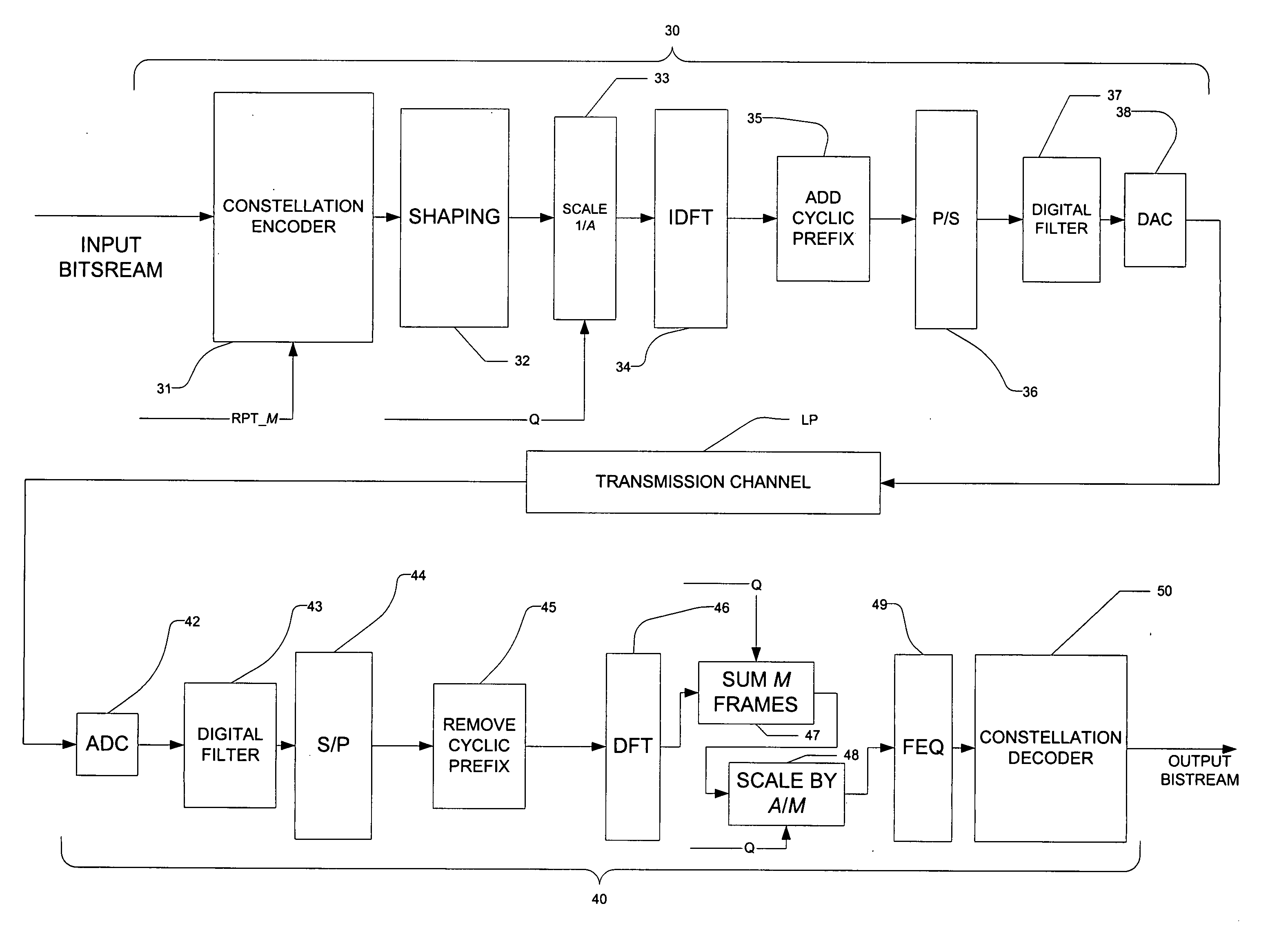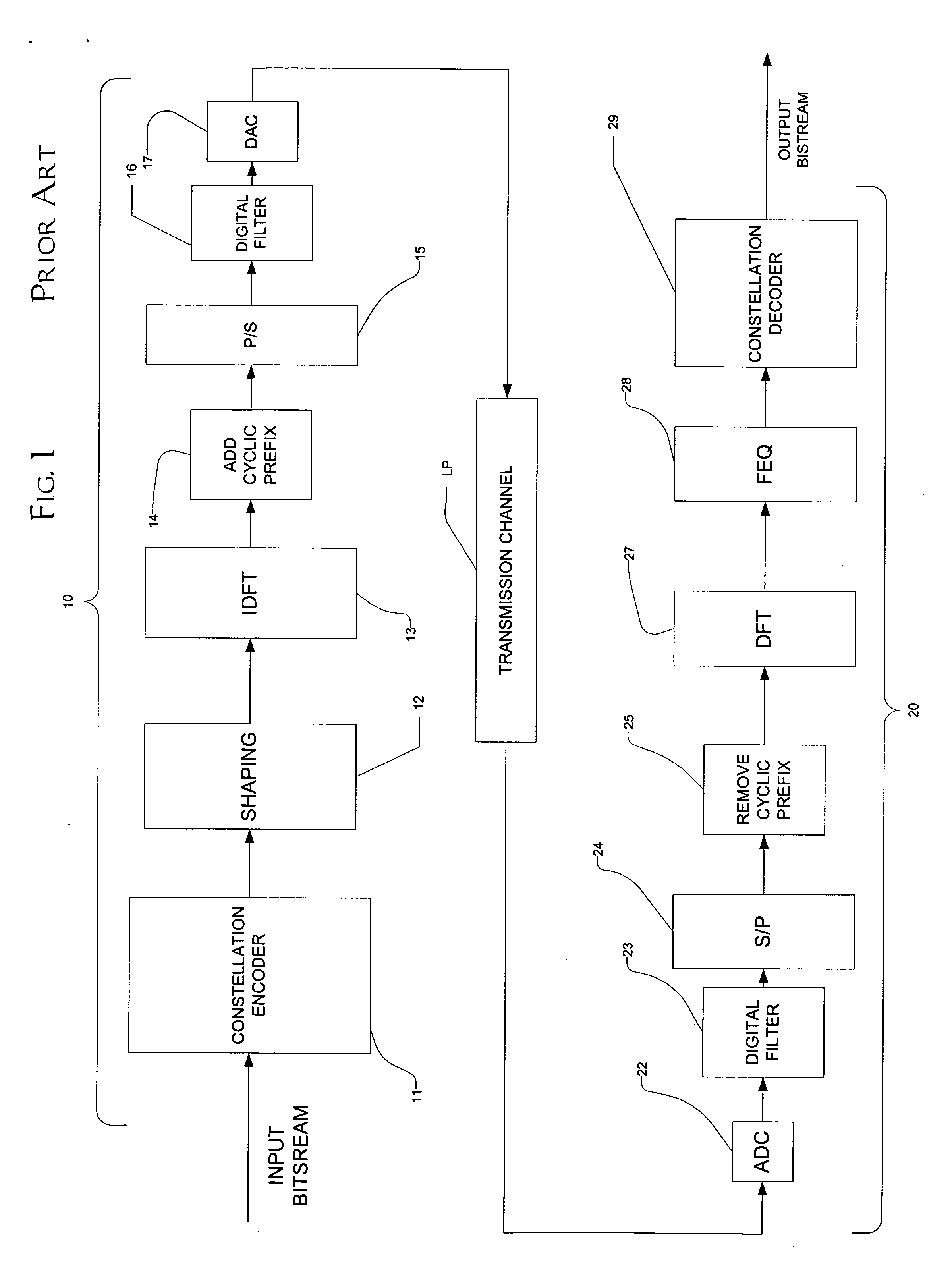Efficient low-power mode for multicarrier communications
a multi-carrier, low-power technology, applied in the field of digital communications, can solve the problems of high peak-to-average ratio (par) of signal amplitude, inability to load bits in subchannels, and constraints on transmission circuitry, and achieve the effect of substantially reducing the amplitude of output signals
- Summary
- Abstract
- Description
- Claims
- Application Information
AI Technical Summary
Benefits of technology
Problems solved by technology
Method used
Image
Examples
Embodiment Construction
[0036] The present invention will be described in connection with its preferred embodiment, namely as implemented into transceivers for digital subscriber line (DSL) communications. However, it is contemplated that this invention may also be used in other communications contexts, especially those using multicarrier modulation (MCM) techniques. A specific example of another such context is orthogonal frequency division multiplexing (OFDM), as is now being deployed in wireless telephone and wireless network communications. It is contemplated that other communications technologies that may benefit from this invention will be apparent to those skilled in the art having reference to this specification. Accordingly, it is to be understood that the following description is provided by way of example only, and is not intended to limit the true scope of this invention as claimed.
[0037] Referring now to FIG. 3, the data flow of DMT communications according to a first preferred embodiment of ...
PUM
 Login to View More
Login to View More Abstract
Description
Claims
Application Information
 Login to View More
Login to View More - R&D
- Intellectual Property
- Life Sciences
- Materials
- Tech Scout
- Unparalleled Data Quality
- Higher Quality Content
- 60% Fewer Hallucinations
Browse by: Latest US Patents, China's latest patents, Technical Efficacy Thesaurus, Application Domain, Technology Topic, Popular Technical Reports.
© 2025 PatSnap. All rights reserved.Legal|Privacy policy|Modern Slavery Act Transparency Statement|Sitemap|About US| Contact US: help@patsnap.com



